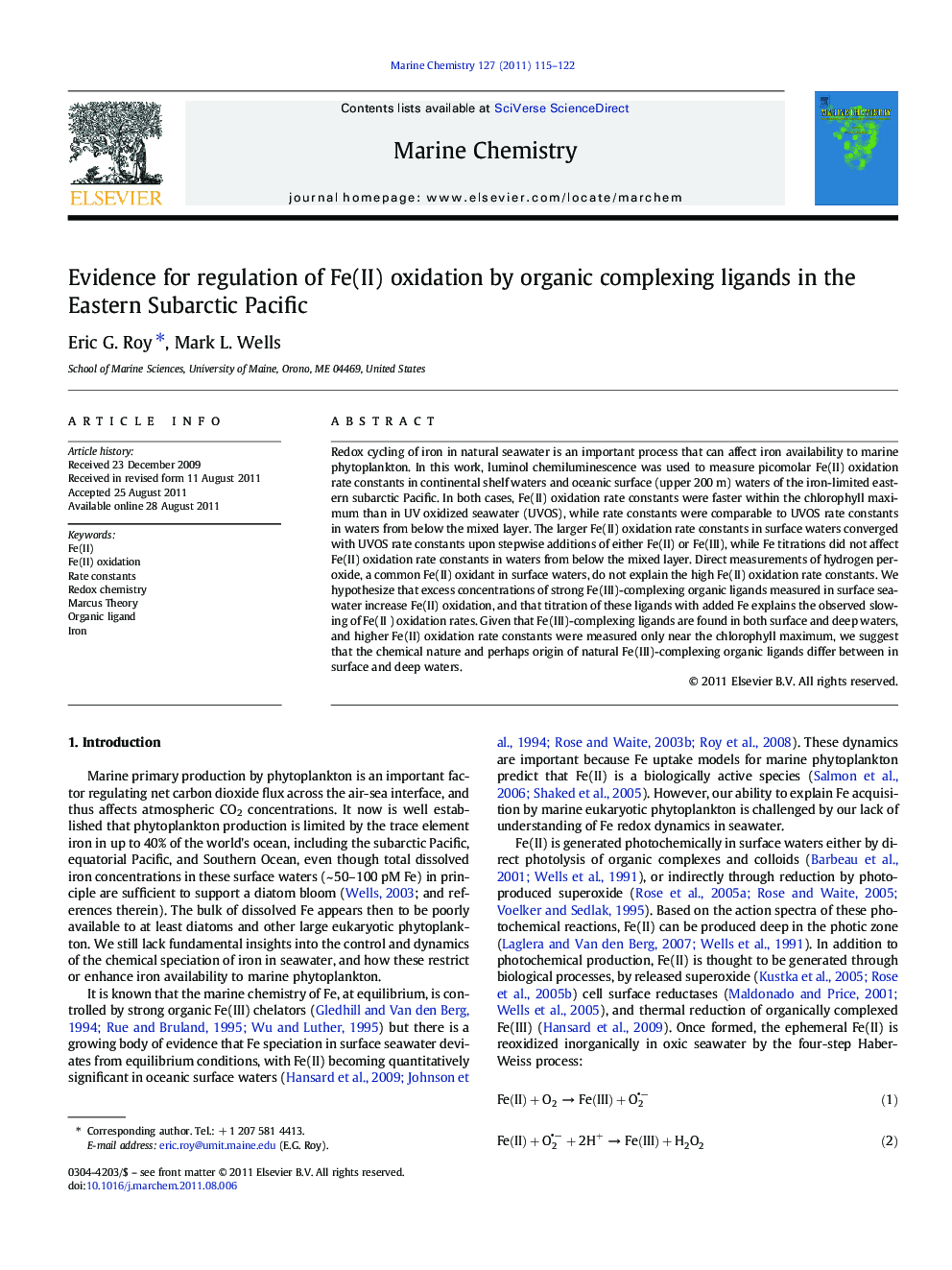| Article ID | Journal | Published Year | Pages | File Type |
|---|---|---|---|---|
| 1261486 | Marine Chemistry | 2011 | 8 Pages |
Redox cycling of iron in natural seawater is an important process that can affect iron availability to marine phytoplankton. In this work, luminol chemiluminescence was used to measure picomolar Fe(II) oxidation rate constants in continental shelf waters and oceanic surface (upper 200 m) waters of the iron-limited eastern subarctic Pacific. In both cases, Fe(II) oxidation rate constants were faster within the chlorophyll maximum than in UV oxidized seawater (UVOS), while rate constants were comparable to UVOS rate constants in waters from below the mixed layer. The larger Fe(II) oxidation rate constants in surface waters converged with UVOS rate constants upon stepwise additions of either Fe(II) or Fe(III), while Fe titrations did not affect Fe(II) oxidation rate constants in waters from below the mixed layer. Direct measurements of hydrogen peroxide, a common Fe(II) oxidant in surface waters, do not explain the high Fe(II) oxidation rate constants. We hypothesize that excess concentrations of strong Fe(III)-complexing organic ligands measured in surface seawater increase Fe(II) oxidation, and that titration of these ligands with added Fe explains the observed slowing of Fe(II ) oxidation rates. Given that Fe(III)-complexing ligands are found in both surface and deep waters, and higher Fe(II) oxidation rate constants were measured only near the chlorophyll maximum, we suggest that the chemical nature and perhaps origin of natural Fe(III)-complexing organic ligands differ between in surface and deep waters.
► Subnanomolar Fe(II) oxidation rates show horizontal and vertical variability. ► Subnanomolar Fe(II) oxidation rates are fastest at chlorophyll maximum depth. ► Fe(II) oxidation slows with stepwise additions of Fe(II) or Fe(III). ► Organic Fe complexing ligands may regulate Fe(II) oxidation in natural seawater.
